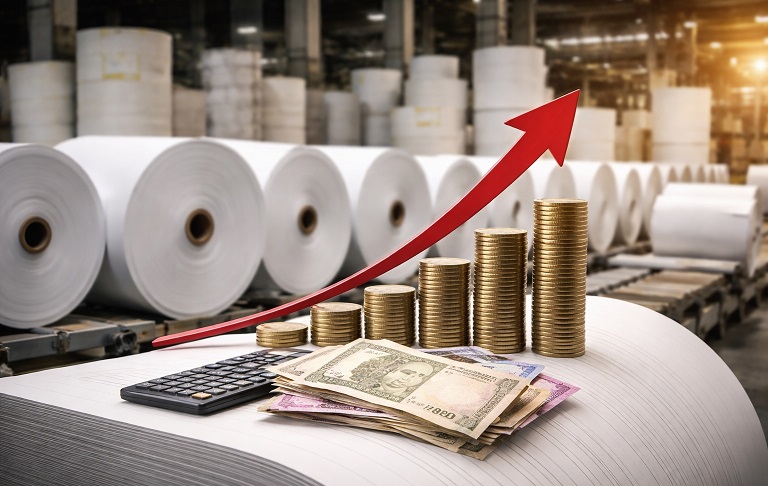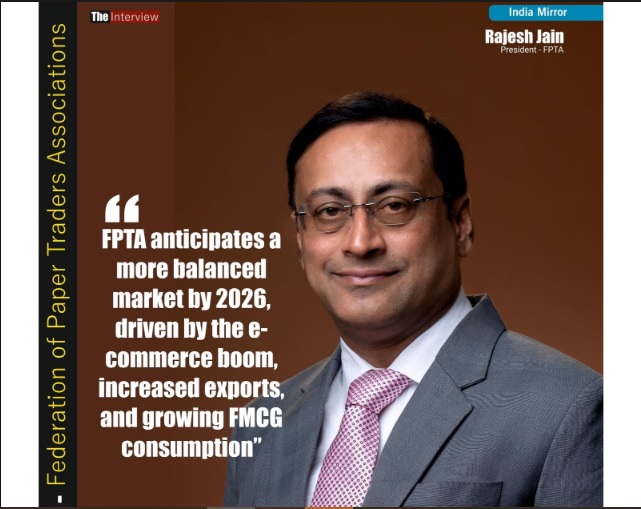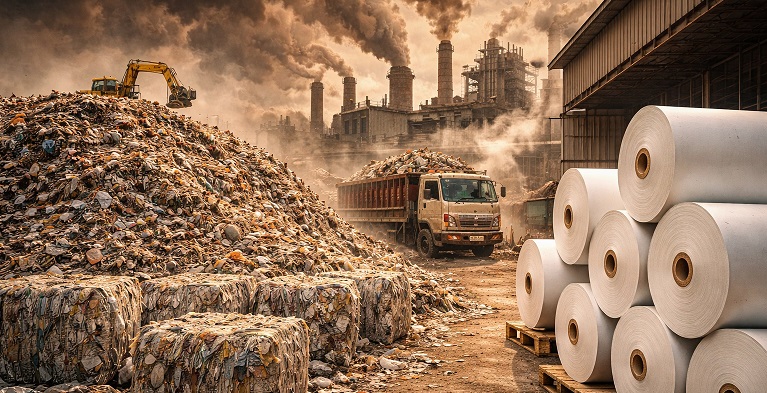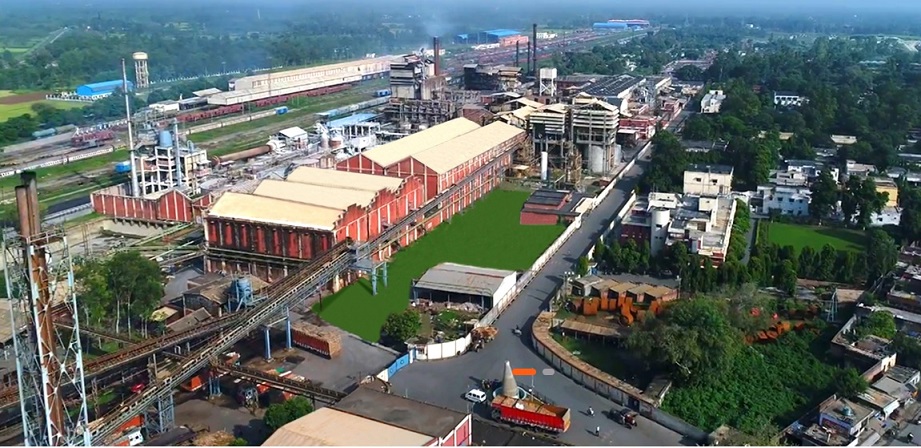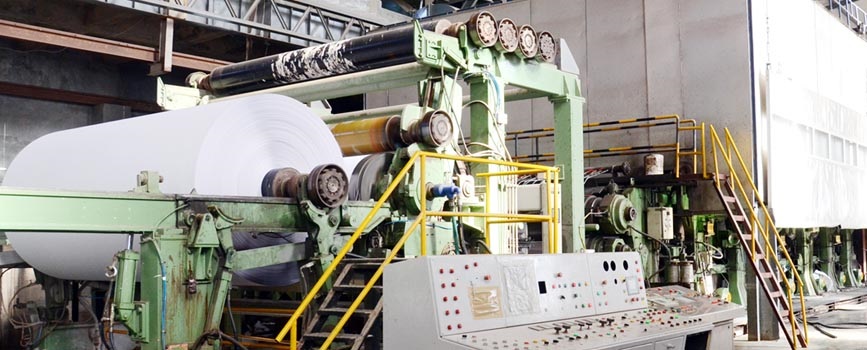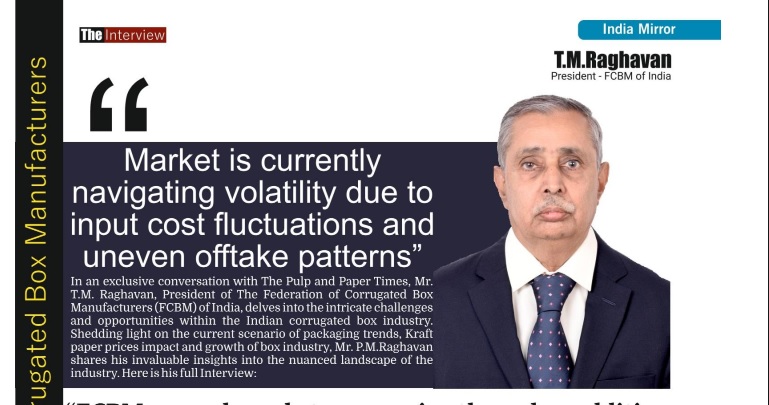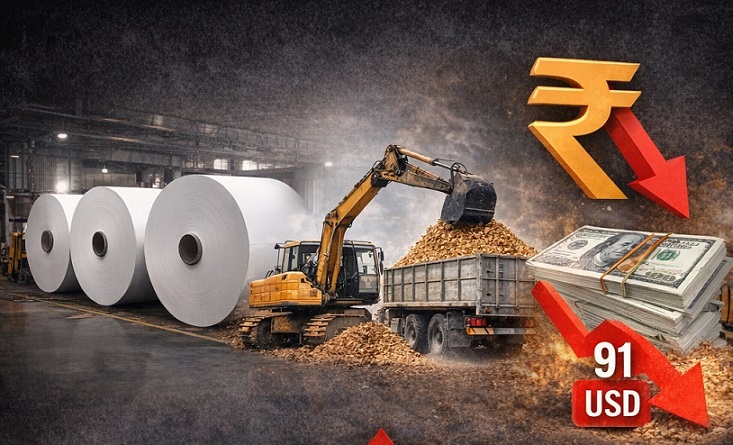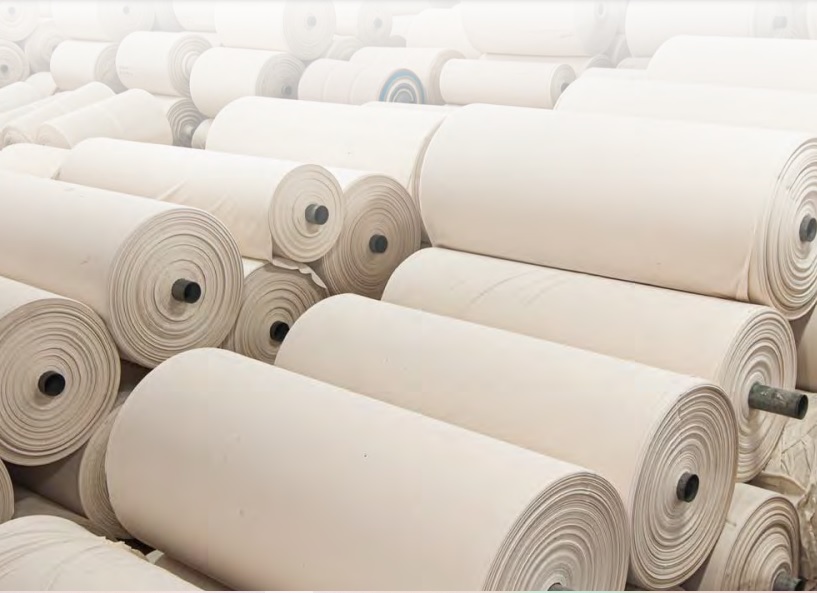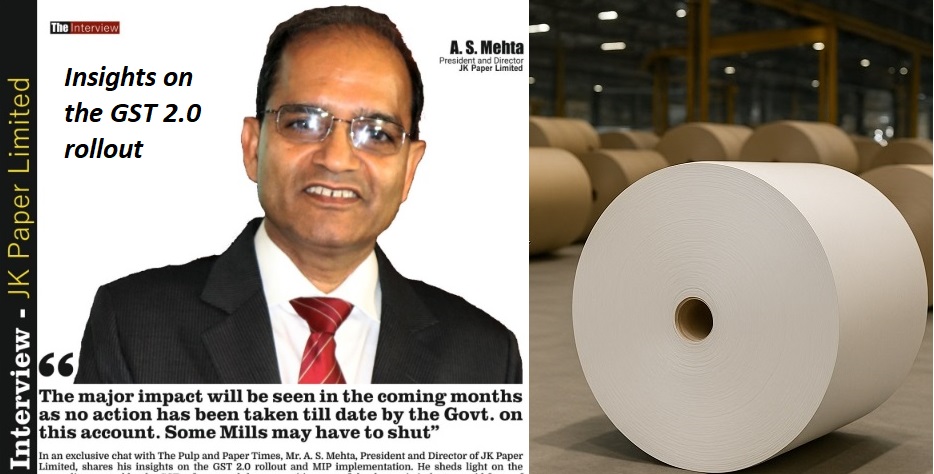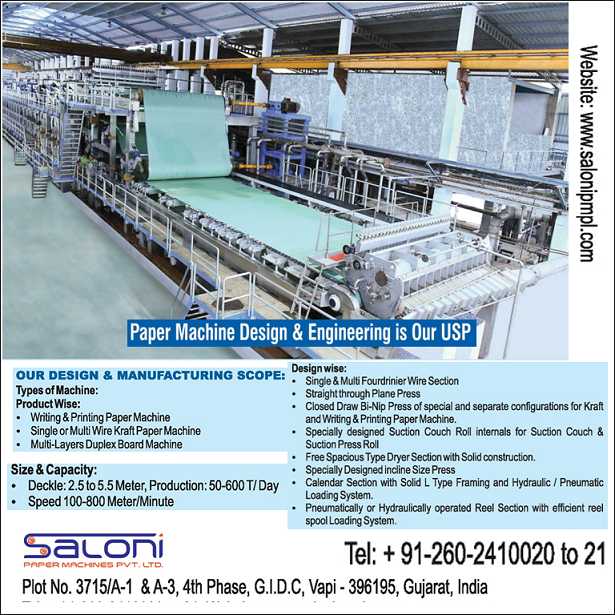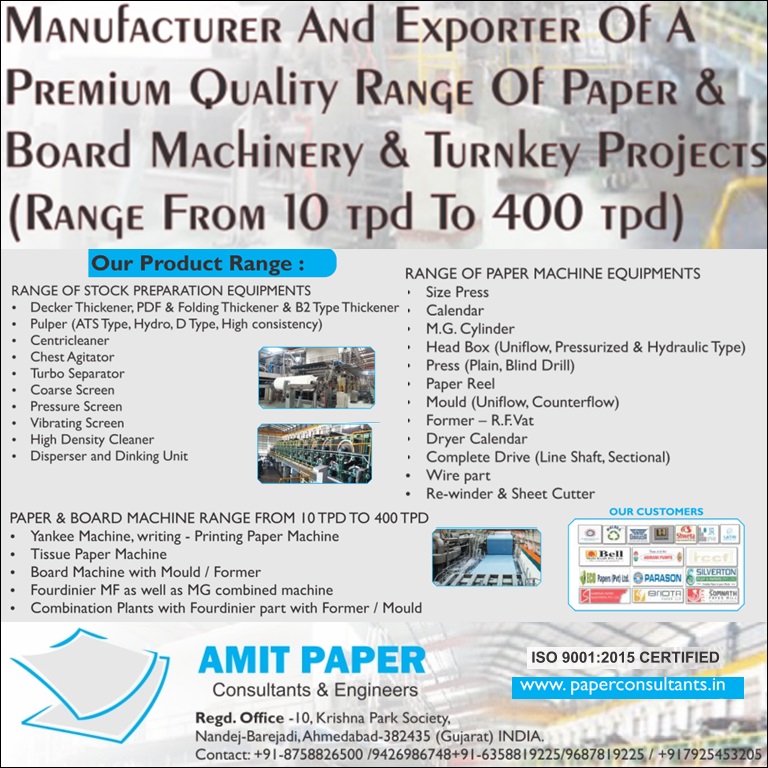Pulp and fibre prices to moderate; a turnaround in paper prices is expected: an in-depth analysis of WPP, pulp, and packaging paper market by experts
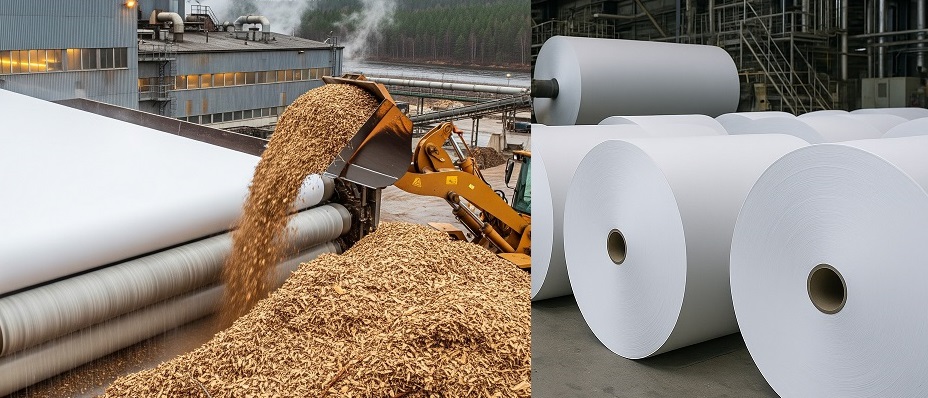
Pulp and fibre prices to moderate; a turnaround in paper prices is expected: an in-depth analysis of WPP, pulp, and packaging paper market by experts
Key points:
- CRISIL anticipates that the paper market will grow 6-8% on-year in fiscal 2026. The paperboard segment will grow 7-9%, driven by an expected uptick in end-user demand from the FMCG, apparel, e-commerce and pharmaceutical sectors
- CareEdge ratings expects the operating margins of the sector to improve by about 200 bps during FY26.
- Prices of maplitho and creamwove papers dropped ~10% in fiscal 2025, further constraining profitability of WPP players
- Pulp pricing is still under downwards pressure in most markets with BCTMP the weakest and fluff pulp the strongest.
The Pulp and Paper Times’ Exculsive
In FY23, with increased demand owing to return to office, India's printing and writing paper (PWP) manufacturers witnessed significant growth in net sales realisations (NSR). Given the unique case of Covid and pent-up demand in FY23, this performance was short-lived and moderation in sales realisations happened thereafter in the paper industry.
In a Interview with The Pulp and Paper Times, Mr. Rahul Guha, Senior Director at CRISIL Ratings, says, the current market conditions are challenging for the sector, as the surge in cost of raw materials (wastepaper, recycle paper and pulp) is not commensurate with the increase in paper prices. In fiscal 2025, pulp prices rose an estimated 9-11%, while wastepaper prices rose 26-28%. The increase in raw material prices was majorly on account of supply disruption in global market.
“For WPP manufacturers, the impact on profitability is steeper. Owing to sluggish demand, volume growth has remained subdued, limiting the ability to pass on the increase in raw material prices. Resultantly, prices of maplitho and creamwove papers dropped ~10% in fiscal 2025, further constraining profitability of WPP players. With higher domestic plantation to start yielding benefits in the latter part of fiscal 2026, we expect pulp and fibre prices to moderate, aiding profitability in the near term,” Mr. Rahul Guha said.
Overall, the paper sector struggled under the combined pressures of declining average sales price realisation and raw material cost inflation, leading to margin declines in FY24 and 9MFY25. However, it is observed that with normalisation of prices of hardwood pulp and stability in the costs of other raw materials such as wastepaper and Bagasse along with improved demand from the paper board segment, CareEdge ratings expects the operating margins of the sector to improve by about 200 bps during FY26.
Volume growth in the PWP segment driven by the new education policy, and the rising literacy rate The implementation of the National Education Policy (NEP) 2020 from the academic year 2023–24 is expected to drive strong growth in the PWP segment. As per Union Budget 2025-26, total budget allocation for Ministry of Education has reached Rs 1,28,650 crore, marking a 6.22% increase over Budget Estimate (BE) 2024-25. This is expected to enhance literacy and learning, boosting demand for PWP.
Packaging Paper:
“The extent of impact on packaging paper and board manufacturers is limited compared with WPP manufacturers. Given higher demand for duplex board and kraft paper, the increase in raw material prices was partly passed on, thereby aiding an increase of ~13% and ~19% in prices of duplex board and kraft paper, respectively, in fiscal 2025. With the expected stability in volume amid absence of a steep increase in cost, profitability of packaging paper and board players is likely to improve in the medium term,” Mr. Guha described.
He further added that in the medium term, kraft and duplex paper is likely to lead demand in the sector, driven by an expected uptick in end-user consumption of fast-moving consumer goods (FMCG), apparel, e-commerce and pharmaceuticals. Furthermore, companies are also investing in process efficiency improvement, which is likely to bring down the overall production cost for the manufacturers, thereby, aiding their profitability in the longer run.
Growth Anticipation:
CRISIL anticipates that the paper market will grow 6-8% on-year in fiscal 2026. The paperboard segment will grow 7-9%, driven by an expected uptick in end-user demand from the FMCG, apparel, e-commerce and pharmaceutical sectors. The WPP segment will follow with growth of 2-3% due to the adoption of the “print and digital” concept, partly offset by the trend of digitisation.
The specialty paper segment (tissue paper, money bills, tea bags, and labels), which forms a small portion of sectoral demand, will grow 11-13%.
“The Indian paper industry is at a critical juncture, navigating a complex landscape of rising imports, fluctuating raw material costs, and evolving market dynamics. While FY24 and 9MFY25 have posed challenges in terms of declining domestic production and significant pressure on margins, the sector is poised for a gradual turnaround. CareEdge Ratings expects that stabilisation of raw material costs & moderation in imports, coupled with strong demand drivers from packaging, e-commerce, and education, would improve operating margins by 200 bps in FY26. Government policies, such as the ban on single-use plastics and the implementation of NEP, will continue to support the industry's long-term growth. However, domestic manufacturers must focus on modernisation, cost optimisation, and innovation in sustainable packaging solutions to sustain competitiveness,” says D. Naveen Kumar, Associate Director, CareEdge Ratings.
China’s exports of coated paper & paperboard reached almost 5 million tonnes in 2024, rising 15%/y since 2020. Its 2024 exports to India topped 400k tonnes, 4 times higher than in 2020. With new Ivory Board capacity this year and next in China, Indonesia, Europe and the US, along with subdued economic growth expected globally over the next year or two, more paper & board likely headed towards India and other SEA nations as long as it can.
Paper Prices:
“There has been a decline in pricing for writing and printing paper. And from the start of the year towards—that means Q1 and Q4 FY25—there has been a decline of approximately Rs. 3,000 to Rs. 4,000 a ton for us; I am talking about Kuantum Papers, which reflects a reduction of about 6% to 7%,” Mr. Pavan Khaitan, VCMD of Kuantum Papers Limited said, during Q4 Results conference call in May 2025.
“From Q3, we have actually been able to effect an increase, and we have increased our pricing by about 3%,” he added.
Answering a question about paper price anticipation in the next three to four months, Mr. Khaitan informed that, “We are sort of thinking and sort of espousing that pricing is going to go up. There is every likelihood of pricing going up, I think, on two accounts. One is, international wood pricing has started going up. And that is a reflection of—and will tantamount to or result in—an increase in paper pricing as well. Secondly, board paper, kraft paper, packaging paper has already effected an increase of about Rs. 3,000 per ton. So I think the turnaround has started. Signs are there that paper pricing should go up, and that's a good outlook for us.”
“Even a single-digit increase will be very helpful. About a 6% to 7% increase is there on the cards, is there in the offing, and that will help the industry to a big extent,” Mr. Khaitan said.
Pulp:
In an exclusive Interview with The Pulp and Paper Times, Mr. Brian McClay, Chairman of TTOBMA, says that pulp pricing is still under downwards pressure in most markets with BCTMP the weakest and fluff pulp the strongest. China’s imported pulp buying has been very subdued since early March as paper machines there run at close to half speed and more domestic pulp supply has become available, recently including BSK and fluff. BHK prices in China now around $500 CIF Port and NBSK $700, both down ~$100 since then.
Pulp markets in Europe for which we include Turkey, the Middle-East and North Africa, are also exceptionally quiet. Very limited commercial engagement now as some well pulp-stocked buyers wait for prices to get closer to China levels.
North America’s pulp market is relatively stable, especially for Canadian NBSK now priced around $900 on a delivered mill basis. The tissue business is strong and Nordic NBSK suppliers face a 10% US import tariff (as do LatAm BEK suppliers).
Web Title: Pulp and fibre prices to moderate; a turnaround in paper prices is expected: an in-depth analysis of WPP, pulp, and packaging paper market by experts




 Join WhatsApp Group
Join WhatsApp Group Join Telegram Channel
Join Telegram Channel Join YouTube Channel
Join YouTube Channel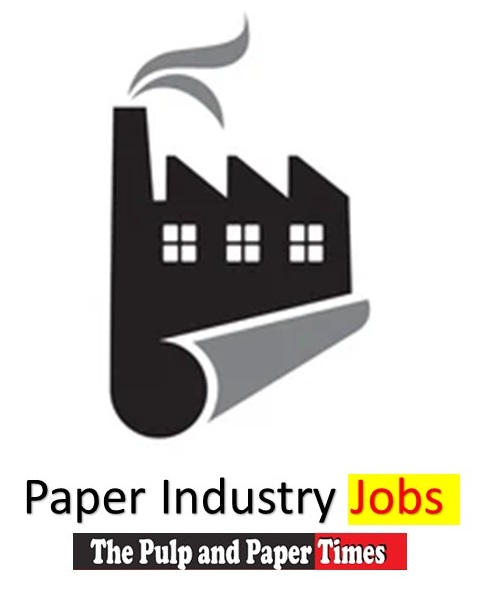 Join Job Channel (View | Submit Jobs)
Join Job Channel (View | Submit Jobs) Join Buy Sell Channel (Free to Submit)
Join Buy Sell Channel (Free to Submit) Paper News Headlines Channel (Free to read)
Paper News Headlines Channel (Free to read)




